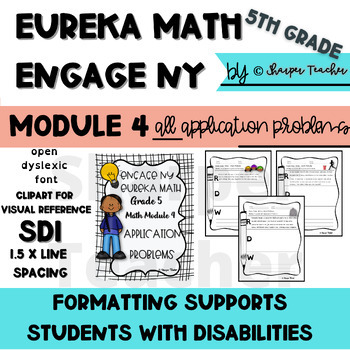Application Problem graphic organizers Engage NY Eureka Math 5th grade Module 4
- PDF
Also included in
- Included in this download:5th-grade Engage NY/Eureka Math Module 4 PPT - fully planned and carefully created to support students with learning disabilities, including dyslexia and ADHD5th-grade RDW graphic organizers for all application problems that are part of Module 4 - also created to support stPrice $52.99Original Price $54.24Save $1.25
Description
Cut down on your prep time! This download pdf printable includes all of the application problems from EngageNY Eureka Math Module 4. ALL application problems are ready to go! Each problem is on an RDW (Read, Draw, Write) graphic organizer and each has an image to go along with the problem itself.
Also included in the download are 2 application problem booklet cover choices - one in color and one in black and white, making it easy to create a booklet of problems for your students.
These graphic organizers were designed to support all students, particularly students with IEPs (need SDI), those with Dyslexia, those who struggle with executive functioning issues, need consistent scaffolding, and any students who benefit from the use of a graphic organizer.
(Please note: a few of the Module 4 lessons do not include application problems)
Thank you for checking out this product! Be sure to stop by my TpT store.





